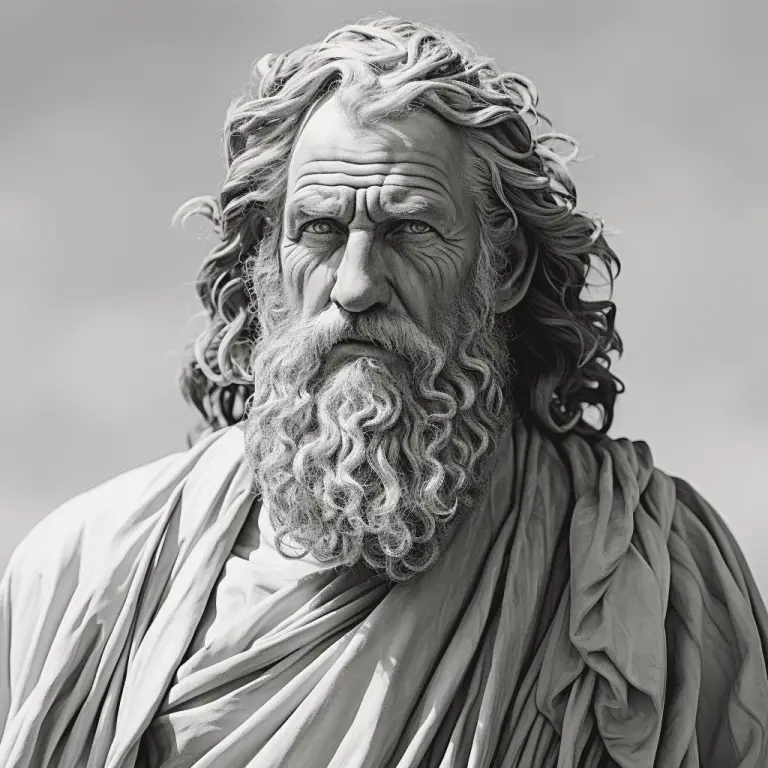One of the most influential ancient Greek philosophers created an institution known as Plato’s Academy. The Academy also referred to as the Platonic Academy or simply the Academy, was a renowned educational institution founded by Plato himself. It served as a center for learning and philosophical discussions during Plato’s lifetime.
Located just outside Athens within the city walls, Plato’s Academy became a gathering place for scholars and intellectuals interested in exploring various fields of knowledge. With a focus on both theoretical and practical education, the academy offered courses in subjects ranging from philosophy and mathematics to natural science and political philosophy.
The influence of the academy extended beyond Plato’s death, with senior and junior members continuing to develop his ideas while introducing their own perspectives. Notable figures associated with the academy include Aristotle, who later established his own school called Lyceum, and other philosophers mentioned among the seven academy philosophers. The legacy of Plato’s Academy continued even after its closure, as it was revived several times throughout history under different names such as New Academy or Neoplatonic Academy.
In conclusion, Plato created an institution called Plato’s Academy which played a significant role in shaping ancient Greek philosophy. Its impact on education and intellectual discourse cannot be understated, making it an important milestone in the development of philosophical schools during that time period.
Plato’s Institution: The Academy
Plato, one of the most influential figures in ancient Greek philosophy, created a renowned educational institution known as the Academy. This institution, which was founded by Plato himself, played a crucial role in shaping the philosophical landscape of ancient Greece and beyond.
Plato founded the Academy in 387 BCE, shortly after his return from travels to Egypt and Sicily. Located just outside Athens’ city walls, it served as a gathering place for scholars and students interested in exploring deep philosophical inquiries.
The Academy also referred to as Plato’s School or Platonic Academy, was established around 387 BCE and existed until 529 CE. Located just outside Athens within the city walls, it served as a center for intellectual pursuit and philosophical discourse. It is important to note that this is not related to modern-day Oxford University Press or Cambridge University Press.
During its early years, the curriculum at the Academy focused on various fields of study such as mathematics, music, astronomy, and natural science. However, philosophy remained at the core of its teachings. Plato himself taught his students through dialogues recorded in his famous works.
At the Academy, Plato taught his students through dialogue and debate, emphasizing critical thinking and questioning assumptions. The curriculum covered a wide range of subjects, including mathematics, music, astronomy, ethics, metaphysics, political philosophy, and natural science.
The structure of the Academy consisted of senior members who led discussions and guided research projects while junior members actively participated in these debates. This collaborative environment fostered intellectual growth and allowed for the exchange of ideas among individuals with diverse perspectives.
After Plato’s death in 347 BCE, several prominent philosophers continued his legacy at the Academy. Notable figures such as Speusippus and Xenocrates were among the seven academic philosophers mentioned by Aristotle. Over time, there were different phases within the Academy’s existence referred to as Old Academy (Plato’s lifetime), Middle Academy (Speusippus’ leadership), Early Academy (Xenocrates’ tenure), Late Academy (Arcesilaus’ influence), and even revivals like Neoplatonic Academies later on.
The Academy continued to thrive even after its original founders passed away. During its long existence spanning centuries, it underwent various transformations while remaining an esteemed educational institution. The senior members of the academy were called Academicians or Academics while junior members were referred to as Scholars or Ephebes.
It is worth mentioning that there were only two academies recognized historically – Plato’s original establishment and a revived Neoplatonic academy that emerged much later in Rome during Late Antiquity.
Plato’s legacy has left an indelible mark on Western philosophy and education. His emphasis on seeking absolute truth through reason continues to inspire scholars today. The influence of his dialogues and ideas can be seen in various philosophical schools and movements that followed.
In conclusion, Plato’s institution, the Academy, was a renowned ancient Greek educational institution where he taught his students and engaged in profound philosophical discussions. Its impact on classical philosophy and subsequent intellectual developments cannot be overstated. The institution that Plato created was called the Academy, also known as Plato’s Academy or the Platonic Academy. It was a renowned ancient Greek educational institution dedicated to the study of philosophy and various other disciplines. As one of the earliest philosophical schools, it played a significant role in shaping the course of Western intellectual history.
Today, we recognize Plato’s creation as a pivotal moment in ancient philosophy that laid the foundations for future philosophical schools. Its impact resonates through the works of Plato’s dialogues, which explore timeless questions about truth, knowledge, and the nature of reality. The Academy’s pursuit of absolute truth continues to inspire scholars and students in their quest for understanding at prestigious institutions like Oxford University Press, Cambridge University Press, Princeton University Press, and many others around the world.
